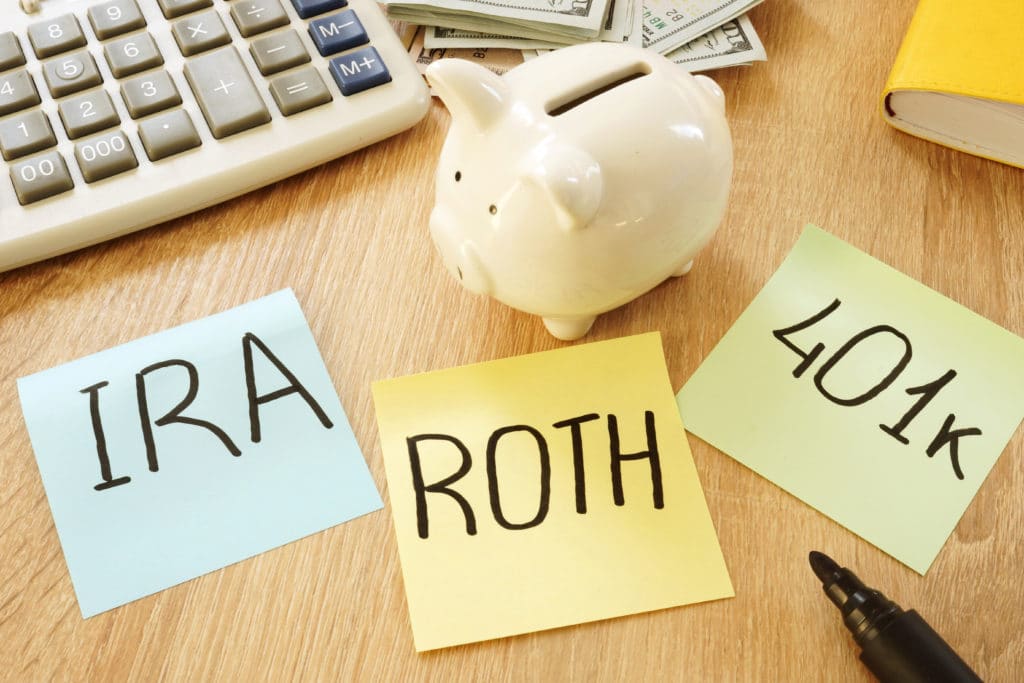The Investing Power Combo: Pairing a Company 401(k) with a Self-Directed IRA
Balancing a 401(k) and a Self-Directed IRA
The basic tenet of successful investing has never changed: thoughtful diversification. It's impossible to accurately predict which assets or investments will be profitable. However, with thoughtful diversification, you don't need a crystal ball. Financial history has shown that investments spread out over a wide variety of assets will usually deliver a decent return. If you or your advisor can make educated guesses about which assets to choose, that's even better. This is the idea behind most company-sponsored 401(k) plans. The company signs up with one of the big brokerages that provide a mutual fund as the investment vehicle. The mutual fund is diversified within the stock market and its returns reflect that diversification.

The only downside of the 401(k) plan is that it does not diversify beyond market products. The mutual fund may usually do well, but it too is heavily tracked with the stock market. If stocks take a tumble, then your retirement account can similarly fall. When the market crashed in 2008, a lot of account holders saw a massive decline in their retirement savings. A Self-Directed IRA allows retirement investors to diversify beyond the stock market. By investing in alternative assets like local real estate, you can provide alternative routes for your funds to grow that are not tied to the market.
True diversification would incorporate both kinds of investing: a stock-based 401(k) and an alternative asset–based Self-Directed IRA. This combination allows you to profit from both asset classes in a strong economy and to serve as a hedge when the economy takes a turn. The question is can you invest in both at once?
Can You Open an IRA if you have a 401(k)?
If you're wondering, "can I have a 401(k) and an IRA at the same time?" you should know that legally there are no reasons not to invest with a Self-Directed IRA and 401(k) at the same time. In fact, many investors have more than one retirement account as a result of switching jobs or other life events. However, possessing multiple accounts doesn't mean you have unlimited freedom to contribute. IRS regulations cap your overall annual contribution, as well as place income limits on certain plans. It's always best to speak to your accountant to determine the rules for your specific situation.
Combined Limit for a 401(k) and an IRA
In 2024 the contribution limit for a 401(k) plan is $23,000. If an investor is 50 or older, the contribution limit jumps to $30,500. The Self-Directed IRA contribution limit is $7,000 and for those 50 or older $8,000. That means that for investors under 50, the combined contribution limit is $30,000, and for those 50 or older $38,500.

The ability to max out on this contribution limit is determined by a worker's income. As long as their earned income is beneath a certain threshold, then they can make contributions to both a 401(k) and a Self-Directed IRA. However, once their income exceeds that threshold, then if the worker has a 401(k), they are not entitled to any tax deductions for an IRA contribution. Let's look at the current limits and see how that would play out practically.
If a worker is single and their employer offers a 40(k) plan, then their income limit caps out between $77,000 and $87,000. That means that if this worker has an income of $87,000 or more, they are not eligible to make a deductible contribution to an IRA. (However, they can still make a non-deductible contribution.) For a married couple, the limit is higher and will also depend on whether both spouses have access to a 401(k). If only one spouse has access to a 401(k), then the combined income limit is between $230,000-$240,000 If both spouses have a 401(k), then the combined income limit is between $123,000- $143,000.
401(k) Plans and a Self-Directed Roth IRA
A Self-Directed Roth IRA differs from a Traditional Self-Directed IRA in the fact that it is not affected by a 401(k) plan. Simply put, there are no limits placed on a Roth IRA contribution because of participation in a 401(k) plan. However, there are limits placed on a Roth IRA based on the account holder's income. The income cap for a single filer is between $146,000 - $161,000. The combined income cap for a married couple is between $230,000 - $240,000.
The IRA Rollover Option
For example, let’s say an investor wants to diversify with non-market assets (like real estate), but is limited by their current financial situation. This may not be due to a lack of funds, but rather because they are running into contribution limits. In such a case, is there any way for an investor to achieve true diversification? The answer is yes. An investor can roll over some (or all) of a pre-existing retirement account and start a Self-Directed IRA with it.
In this scenario, the investor can keep their 401(k) with their current employer, and open a new Self-Directed IRA too. The funding for the Self-Directed IRA can come either by rolling over existing IRA accounts or (if the employer lets it) rolling over part of their existing 401(k). That way they can keep making contributions to the employer plan, while at the same time opening a sizable enough account to purchase alternative assets.

Moving Forward With a Self-Directed IRA
The process for opening a Self-Directed IRA is fairly simple. The actual application should only take about ten minutes and can be done online. The next step is to fund the account by filling out the paperwork for a rollover. Once the Self-Directed IRA is funded, you are free to start investing.
Do you already have an asset in mind? There are different kinds of Self-Directed IRAs and a Madison Trust Specialist can help you decide which one is optimal. Schedule a call here to tell us what you're trying to accomplish.
Disclaimer: All of the information contained on our website is a general discussion for informational purposes only. Madison Trust Company does not provide legal, tax, or investment advice. Nothing of the foregoing, or of any other written, electronic or oral statement or communication by Madison Trust Company or its representatives, is intended to be, or may be relayed as, legal, tax, investment advice, statements, opinions, or predictions. Prior to making any investment decisions, please consult with the appropriate legal, tax, and investment professionals for advice.










